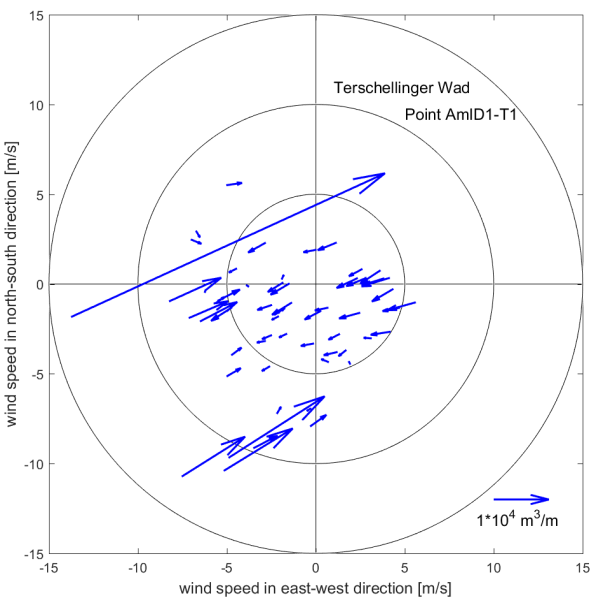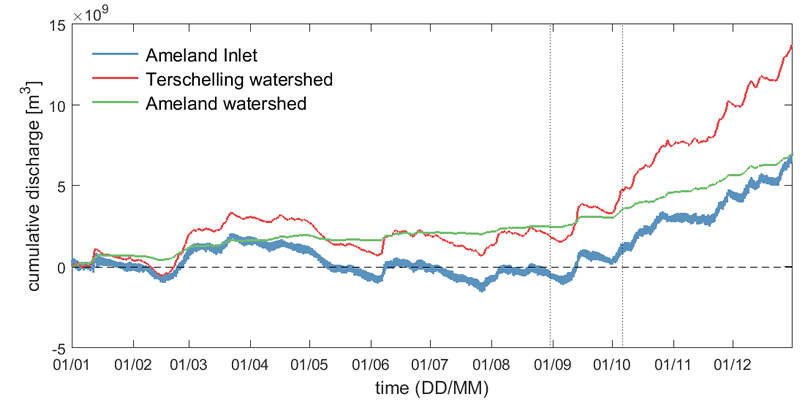R.J.A. van Weerdenburg1,2*, B.C. van Prooijen1, S.G. Pearson1,2, P.K. Tonnon2, M.F.S. Tissier1, Z.B. Wang1,2
1 Delft University of Technology, 2 Deltares
* This email address is being protected from spambots. You need JavaScript enabled to view it.
Introduction
As part of the Kustgenese 2.0/SEAWAD programme, we aim to quantify the exchange of water and sediment between the North Sea and the Wadden Sea. This knowledge is essential to forecasting the sediment budget of the Dutch coastal system in relation to sea level rise and - in response - to optimize nourishment strategies. In this particular research we study how wind forcing and the connectivity of tidal basins in the Wadden Sea affect the exchange of water and sediment through Ameland Inlet.
Methods
This study combines field observations with Delft3D modelling. Field observations were obtained during a 40 days field campaign around Ameland Inlet in fall 2017. Flow velocities were measured in Ameland Inlet’s main channel (i.e. Borndiep) and at three observations points on each of the watersheds of Terschelling and Ameland. The coupled Delft3D-SWAN numerical model is used to unravel the contribution of different forcing mechanisms (i.e. waves, wind, surge and tides), and to extend the measurements in space and time.
Results and conclusions
The direction and magnitude of residual flows over the watersheds of Terschelling and Ameland depend on the wind forcing in relation to the orientation of the watersheds. During calm wind conditions, residuals are directed towards the west of the watersheds. Stronger winds from the west-southwest generate a residual flow towards the east (Figure 1). The magnitude of wind-driven residual flows over the Terschelling watershed can exceed the mean tidal prism of Ameland Inlet. The residual discharge per tidal period over Ameland watershed is only 25-30% of the residual discharge over Terschelling watershed. This leads to residual flows through Ameland Inlet.
Due to the flow over the watersheds, Ameland Inlet experiences a residual outflow in 2017 (Figure 1). The seasonal variations in wind forcing lead to seasonal variations in the residual flow through Ameland Inlet. The combination of residual outflow with high waves on the ebb-tidal delta during strong wind conditions has large consequences for the sediment exchange through Ameland Inlet.


Figure 1. Left: Direction and magnitude of the residual discharge for every tidal period during the field campaign (i.e. the arrows) in relation to the tide-averaged wind conditions (i.e. the position in the wind rose), as measured at an observation point on the Terschelling watershed. Right: Time series of residual discharge over the watersheds of Terscheling and Ameland and through Ameland Inlet in 2017, based on Delft3D modelling results. Eastward (watersheds) and northward (inlet) flow are considered positive. The vertical dotted lines indicate the timespan of field observations.










